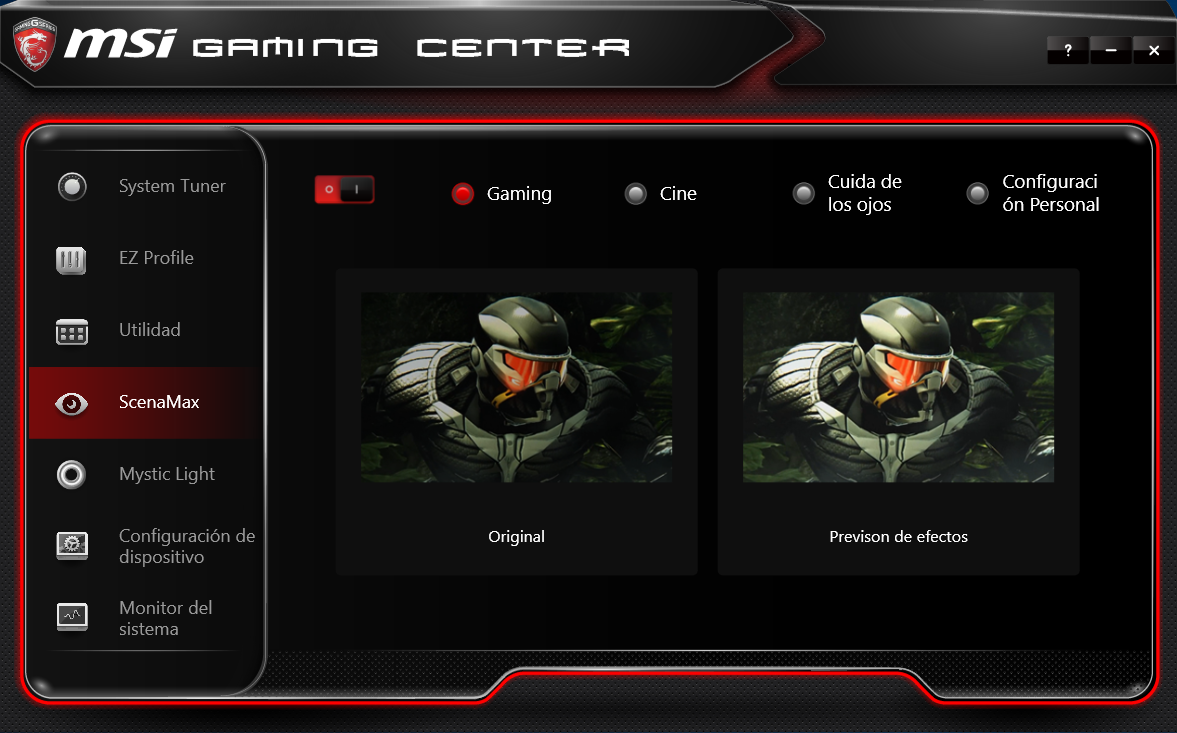

I’ve already mentioned the other two LED zones on the backplate and along the card’s side. In order to properly cool the mission critical components mounted to the Gaming Z’s PCB, there’s a large secondary heatsink that covers the GDDR5X memory modules and MOSFETS. As a result, the heatsink can be thinner without sacrificing its cooling potential.

MSI’s heatsink is a thing of beauty as well since it has been engineered to optimize airflow through the addition of minute air deflectors which not only accelerate air movement but also allow for more efficient cooling. The baseplate is then topped by six squared-off 8mm heatpipes which run upwards and are eventually interspersed at strategic locations throughout the heatsink. This was done since the GP104 core is quite small and an HDT-style base would make proper contact with it. Unlike some, MSI decided to forego direct-contact heatpipes and is instead using a high efficiency solid nickel-plated copper baseplate. So let’s talk a bit more about what went into the Twin Froze VI since there are a few things here which should allow MSI to pull ahead of their competitors. That may sound like the Holy Trinity of unobtainium, I’ll get a bit ahead of myself and say that’s exactly what MSI has achieved.

While it may not be that evident at first glance, thousands of engineering hours have been pumped into the Twin Frozr VI in an effort to make it quieter, higher performing and quite a bit more compact as well.
#Msi dragon eye reviews series#
Perhaps the most important aspect of the new MSI GTX 1080 GAMING series is their thoroughly revised heatsink design. One would hope this premium will translate into some great overclocking headroom as well considering so many NVIDIA cards struggle with oddball (and unnecessary) power / voltage limits. At $749 it is a good $100 more than the Gigabyte G1 Gaming and EVGA Superclocked cards we recently reviewed but only $50 more than the Founders Edition. On paper at least the MSI GTX 1080 Gaming Z is quite simply one of the fastest graphics cards on the planet but it has a suitably high price as well.
#Msi dragon eye reviews software#
Like recent Gigabyte and ASUS cards it can operate in three different modes when MSI’s accompanying software is installed: Silent Mode with base / boost speeds that match a Founders Edition at 1733MHz / 1607MHz, Gaming Mode (1873MHz /1733 MHz) and finally the balls-to-the-wall OC Mode (1911MHz / 1771MHz) Both Gaming and OC also add a bit (100MHz to be exact) of memory overclocking into the equation as well. The Gaming Z naturally sits atop its siblings with some of the highest frequencies I’ve seen on a GTX 1080 thus far. Meanwhile it is the core speeds and relative pricing which vary quite wildly. The reason for that is pretty simple: for all intents and purposes the 8G, Gaming X and higher end Gaming Z all share the same PCB design, components and heatsink. The Gaming Z being covered here is meant to be a flagship within their lineup.ĭmitry and Eber actually covered these new Gaming-series cards at Computex and despite taking careful notes, they struggled to differentiate one from another. As a matter of fact, with the GTX 1080 their Gaming series has now multiplied into three distinct products: the Gaming 8G, Gaming X and Gaming Z. Not only is MSI stepping up their game on the cooling technology front with a new sixth generation Twin Frozr heatsink design but they’re also introducing a brand new GPU control application and brand new product series that outperform many of their competitors’ offerings. With the GTX 10xx-series they’re hellbent on doing things differently. What could possibly set their wares apart from the G1’s, Superclockeds, AMPs and STRIXes of this world? As it stood last time around, not all that much and MSI’s market share took a small dip. MSI has realized that even with such powerful graphics cards within NVIDIA’s stable, their little corner of the market runs the very real risk of stagnation. Also, like underglow was all the rage with import car tuners during the Fast & Furious heydays, LEDs are everywhere now and no, they don’t add horsepower. Everything from overclocking headroom to cooling performance to even out-of-box clock speeds seems to have quickly reached a plateau. As I gradually whittle my way through the stack of GTX 1080’s I have in front of me, something is becoming increasingly obvious: for all their differences in branding, NVIDIA’s board partners have precisions little differentiating their GPU designs from one another.


 0 kommentar(er)
0 kommentar(er)
